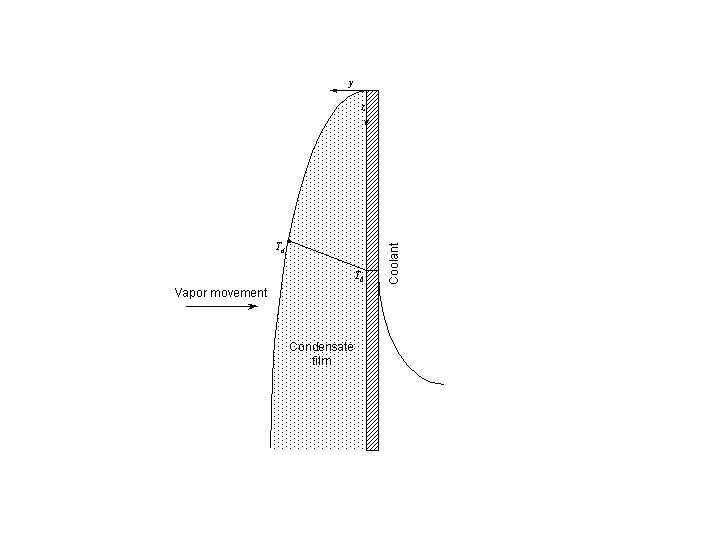
This section of Bird, Stewart, and Lightfoot examines the condensation of steam on a vertical surface. A boiling liquid flowing in a vertical tube is being heated by condensation of steam on the outside of the tube. This problem involves finding what steam temperature is required to supply 92,000 Btu/hr of heat into the tube if the tube is already at 200° F, assuming fluid condensation. We start by finding the fluid properties of saturated steam at 200° F and continue using appropriate equations.

We have included a MATLAB m.file script based on Fig 13.6-2 which is the correlation of heat-transfer data for film condensation of pure vapors on vertical surfaces. When you input the film Reynolds number, the temperature change, dT, will be outputed. The m.file can be found here. (Hold down shift while left-clicking to save the m.file)
Example 13.6-1 Condensation of Steam on a Vertical Surface
> restart;
> g:=32.174*ft/s^2*(3600*s/hr)^2; Acceleration due to gravity in appropriate units
![[Maple Math]](images/project1.gif)
> Ren:=(mu,dHvap)->Q/(Pi*Dia*mu*dHvap); Eq. 13.6-9
![]()
> Q:=92000*Btu/hr; Volumetric flow rate
![]()
>
Dia:=(2*inch)*(1*ft/(12*inch));
Pipe outside diameter
L:=10*ft;
Pipe length
![]()
![]()
> Ren200:=evalf(Ren(.7376*lbm/ft/hr,977.86*Btu/lbm)); Reynolds number at 200 F
![]()
> Gam200:=.7376*lbm/ft/hr*Ren200; Gamma = Ren*mu
![]()
> hm:=(kf,rhof,muf,Gam)->(4/3)*(kf^3*rhof^2*g/(3*muf*Gam))^(1/3); Eq. 13.6-4, mean heat transfer coefficent.
![[Maple Math]](images/project8.gif)
> hm200:=hm(.3853*Btu/hr/ft/F,60.1*lbm/ft^3,.7376*lbm/ft/hr,Gam200);
![[Maple Math]](images/project9.gif)
> hm200:=simplify(evalf(hm200),assume=positive);
![[Maple Math]](images/project10.gif)
> dT:=h->Q/(h*A); Change in temperature
![]()
> A:=L*Pi*Dia; Surface area of tube
![]()
> evalf(dT(hm200));
![]()
A temperature of 221.94 F would be required for the proposed heat flow rate, Q=92,000 Btu/hr.
Check the value on Fig 13.6-2. Book guessed the x-axis value of 1700. This section tests to see how accuarate the value is at T=200 F.
> kf:=.3853*Btu/ft/hr/F;
![]()
> rhof:=60.1*lbm/ft^3;
![[Maple Math]](images/project15.gif)
> g; Check to see if variable g is still assigned.
![[Maple Math]](images/project16.gif)
> delT:=dT(hm200);
![]()
> mu:=0.7376*lbm/(ft*hr);
![]()
> dHvap:=977.86*Btu/lbm;
![]()
> x:=kf*rhof^(2/3)*g^(1/3)*delT*L/(mu^(5/3)*dHvap); x is the horizotal axis
![[Maple Math]](images/project20.gif)
> x:=simplify(evalf(%),assume=positive);
![]()
From Fig. 13.6-2, we see that if the Reynolds number is 244, the correspnding x value should be around 1700. This value is accurate enough considering the experimental values scatter in the figure.